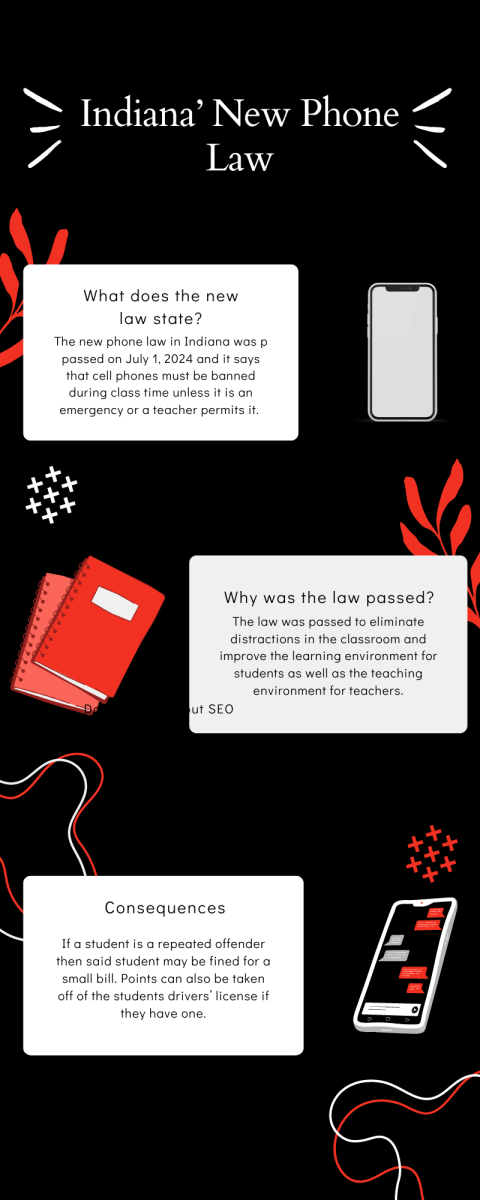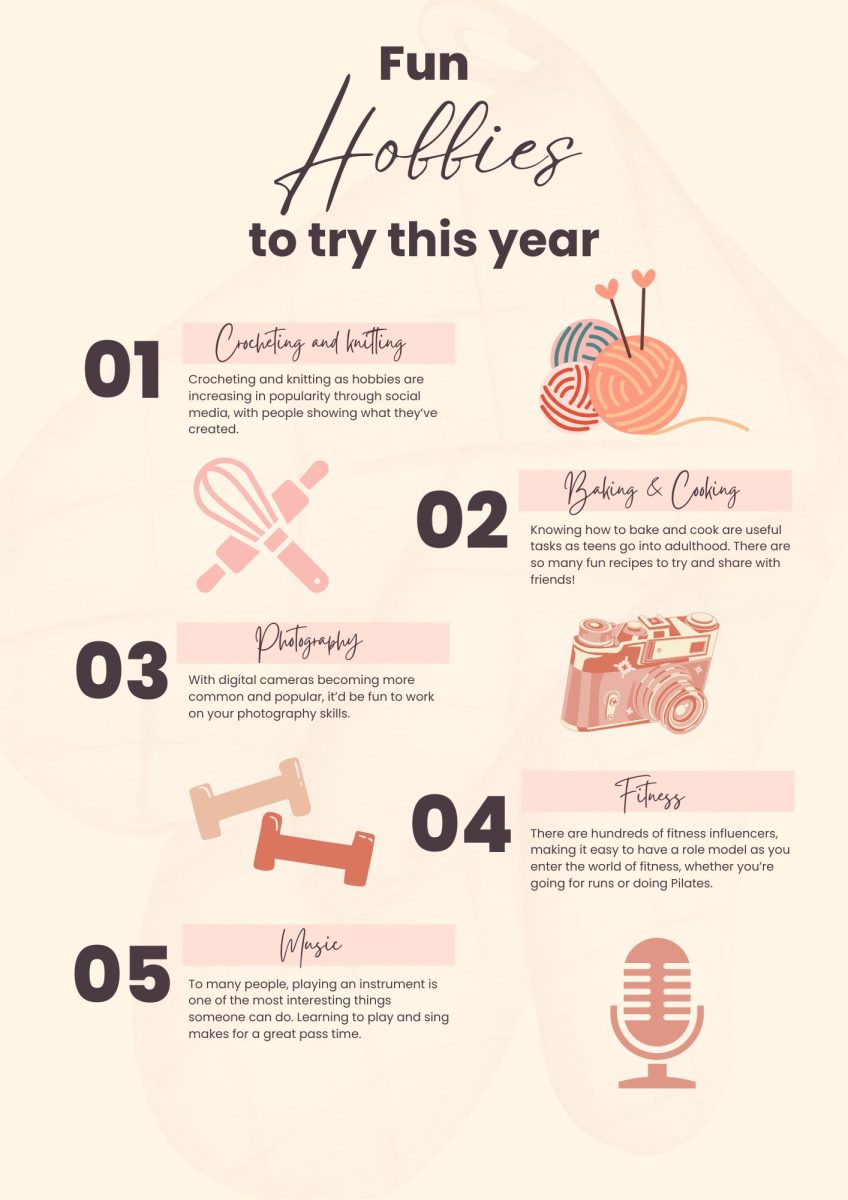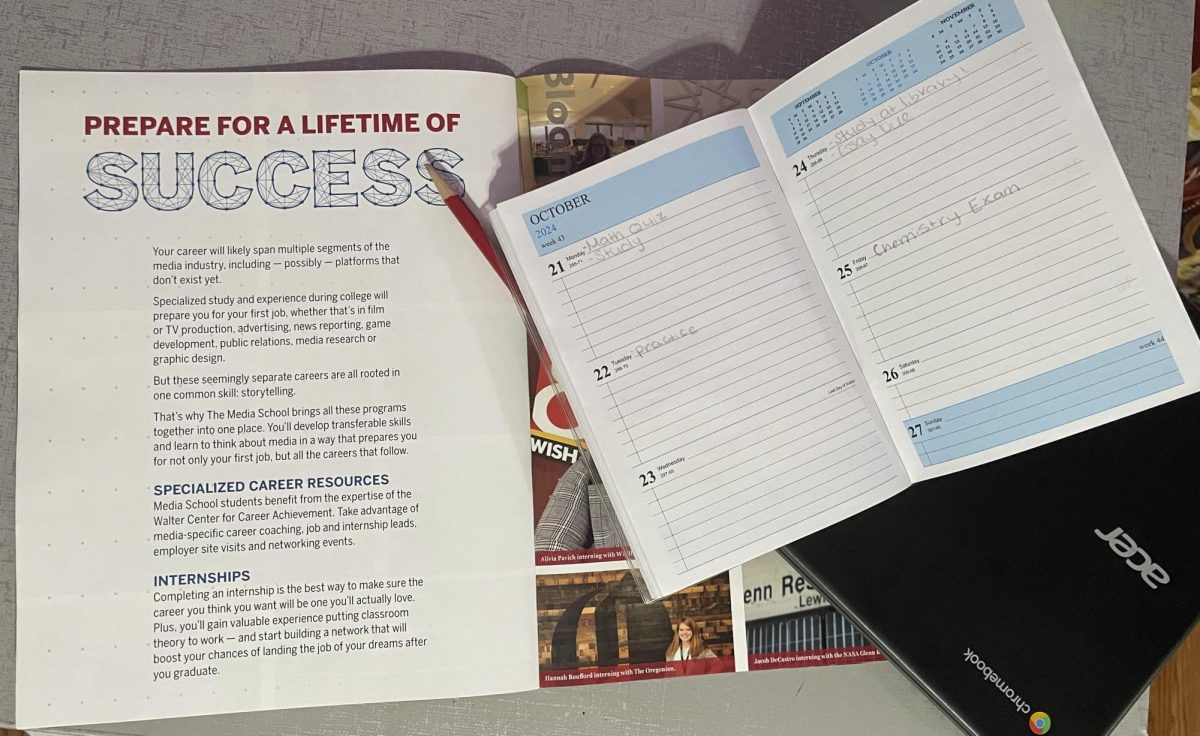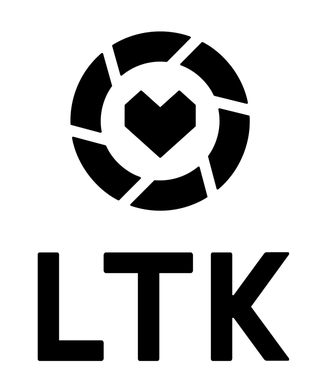As classrooms evolve, so do teachers. From staff that’s been at NAHS since it’s opening, to brand new faces — they all have different perspectives on different topics in school.
Cellular Nightmares
It’s no secret that phones have become a huge problem in school, so much so that a law was passed in the spring of 2024 stating that cell phones are banned in the classroom unless a teacher has given a student permission. When asked about cell phones, most teachers claimed that it wasn’t a big problem for them to control and that most of the time just a single warning is what it takes for a student to put away their phone. As for other teachers though, they’re a nightmare.
English teacher Nellie Mumaw has been at NAHS for almost 10 years and has resorted to buying convex mirrors that hang on the walls that help catch students on their phones. If a phone is seen in her class, it’s put in a bucket that sits on every table and an email gets sent home. After three emails home she starts writing referrals.
“The law just stated the obvious that you shouldn’t be on your phone unless it’s for educational purposes,” Mumaw said.
The National Library of Medicine held a study that proved that when students don’t have their phone on their person, their course comprehension was higher, their anxiety rate was low, and they had higher levels of mindfulness.
Choir Director Mr. Dale McCoy stated that he doesn’t have a problem with phones. McCoy has been at NAHS for 13 years and teaches choir. In his class, he says students don’t have time to be on their phones because they’re always doing something and are motivated to learn.
“Pushing the students to be better every day than they were the Tuesday or Wednesday before helps alleviate the phone issue in my class,” McCoy said.
Chromebooks In Classrooms
There are definite advantages and disadvantages to Chromebooks in classrooms, and online assignments in general for the students and staff, which is probably why most teachers prefer assigning online work rather than paper work.
One of the biggest positives is that students have access to any piece of information at their fingertips at any given time, but this can also be a disadvantage when it falls into the wrong students’ hands. Online assignments are also easier for teachers to take home and grade, they save money on paper and are more convenient. However, multiple studies have shown that the human brain processes information better when things are written down or read on paper.
“I think you need to have a pencil in your hand because typing is not the same, it doesn’t help you process information the way a pencil and paper would,” Mumaw said.
Schools went digital due to the conditions we were in during the COVID-19 pandemic and it was so easy for everyone to do work digitally that education never went back to how things were pre-COVID. Before COVID, business teacher Mr. Dennis Scott didn’t do anything online but after quarantine it was the exact opposite and now he primarily uses Google Classroom to post and grade assignments.
“Before COVID, I didn’t do anything online, I didn’t use Google Classroom at all, and then since COVID I’ve done the opposite, so everything’s turned in online. So, I see advantages and disadvantages for both,” Scott said.
“It’s Like A Scalpel…”
When asked about seating charts every teacher that was interviewed said that seating charts are very beneficial to how their classes function. But, Mrs. Mumaw made a very good point that it isn’t so much about having a seating chart, it’s more about the class dynamics.
“ I think if it’s a super full class and there are lots of super chatty people then the students who need more concentration get left behind, but it can be a super full class and students are really quiet and it doesn’t matter so I think it’s more about class dynamics than it is seating charts. I think we use seating charts to manage those different pockets of students,” Mumaw said.
In Mr. Scott’s class seating charts have been very effective. If students are around people that are going to be distracting then they’re not going to learn to their full potential.
Mr. Charlie Fields claimed that if teachers aren’t using seating charts then they’re “missing the game completely.”
“I think a seating chart is a tool that needs to be used, it’s like a scalpel, it is a very effective weapon to get kids to be able to pay attention and learn better in class. I think it’s incredibly valuable,” Fields said.
“Love You First”
Almost every teacher, when asked about dress code, has said that in their opinion all body parts should be covered. Every teacher with the exception of Mr. McCoy, he stated that he didn’t care what students wore because it’s their bodies and they shouldn’t feel body shamed by teachers.
“There will come a time where they’re like, ‘Yeah I probably don’t need to dress like that anymore.’ When I see girls and guys do that, they’re doing it for attention so my mind goes straight to, ‘why do they need the attention?’ To me, it’s something at the house or no one’s told them ‘Love you first,’. You don’t have to have the attention of all these guys, just love you and then go from there,” McCoy said.
If there are issues with students following dress code, teachers should be handling them quietly and not making a scene so the student doesn’t get embarrassed. Some teachers say it’s not fair for teachers to have to be looking at young teenage girls and how they’re dressed appropriately because it makes them seem like a creep.
It’s also been said by Mrs. Mumaw that there shouldn’t be so many gray areas in a dress code that gives students room to slip up and wear things that aren’t appropriate. Certain students shouldn’t be allowed to wear things if another group of students can, it should be equal, fair, and appropriate.
“If you’re going to do a dress code, do a dress code,” McCoy said.
By understanding the different perspectives from teachers with differing experience ranges, you can see how education and classroom rules have evolved and the teachers with them.








